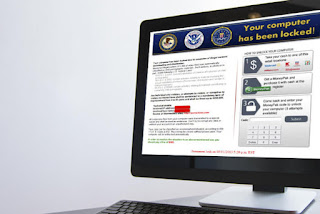How to rescue your PC from ransomware

With nasty malware like Locky making the rounds—encrypting its victims’ files, and then refusing to unlock them unless you pay up—ransomware is a serious headache. But not all ransomware is so difficult.
You can remove many ransomware viruses without losing your files, but with some variants that isn’t the case. In the past I’ve discussed general steps for removing malware and viruses, but you need to apply some specific tips and tricks for ransomware. The process varies and depends on the type of invader. Some procedures involve a simple virus scan, while others require offline scans and advanced recovery of your files. I categorize ransomware into three varieties: scareware, lock-screen viruses, and the really nasty stuff.
Scareware
The simplest type of ransomware, aka scareware, consists of bogus antivirus or clean-up tools that
Lock-screen viruses
Next is the ransomware variety I call lock-screen viruses, which don’t allow you to use your PC in any way. They display a full-size window after Windows starts up—usually with an FBI or Department of Justice logo—saying that you violated the law and that you must pay a fine.
The really nasty stuff
Encrypting malware—such as Locky—is the worst variant, because it encrypts and locks your personal files until you pay up. But even if you haven’t backed up your files, you may have a chance to recover your data.
Removing ransomware
Before you can free your hostage PC, you have to eliminate the hostage taker.
If you have the simplest kind of ransomware, such as a fake antivirus program or a bogus clean-up tool, you can usually remove it by following the steps in my previous malware removal guide. This procedure includes entering Windows’ Safe Mode and running an on-demand virus scanner such as Malwarebytes.
If the ransomware prevents you from entering Windows or running programs, as lock-screen viruses typically do, you can try to use System Restore to roll Windows back in time. Doing so doesn’t affect your personal files, but it does return system files and programs to the state they were in at a certain time. The System Restore feature must be enabled beforehand; Windows enables it by default.
To start the restoration process using System Restore, follow these steps depending on your OS version:
Windows 7
- Shut down your PC and locate the F8 key on your PC’s keyboard.
- Turn the PC on, and as soon as you see anything on the screen, press the F8 key repeatedly. This action should bring up the Advanced Boot Optionsmenu.
- Select Repair Your Computer and press Enter.
- You’ll likely have to log on as a user. Select your Windows account name and enter your password. (If you don’t have a password set, leave that blank.)
- Once logged on, click System Restore.






No comments: